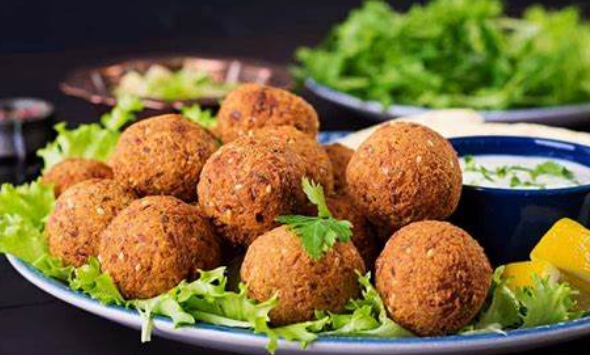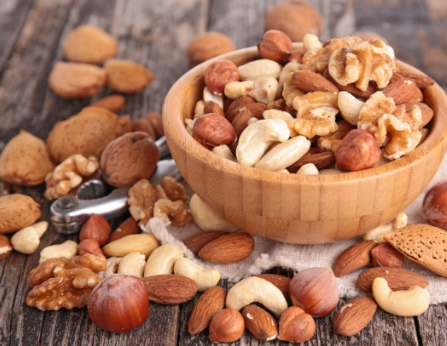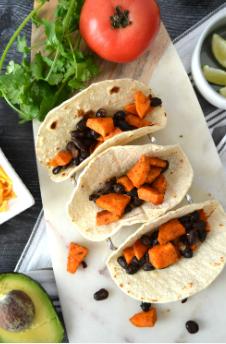Falafel is a beloved street food and snack throughout the Middle East, enjoyed by people of all ages. This crispy, golden-brown fried ball or patty is made from ground chickpeas (or sometimes fava beans), mixed with a blend of fresh herbs and spices, offering a savory and flavorful bite with each mouthful. It’s typically served in a warm pita bread and topped with fresh vegetables, salads, and a drizzle of tahini sauce or yogurt, making it a wholesome and satisfying dish.
Originating from the Middle East, falafel has become a globally recognized food, with variations of the dish appearing in countries around the world. While its exact origins are debated, it is widely believed to have been first made by the ancient Egyptians, who used fava beans in the recipe. Over time, chickpeas became the preferred base in many Middle Eastern countries due to their availability and flavor.
The process of making falafel begins by soaking dried chickpeas overnight. Once they are soft, they are ground up and mixed with onions, garlic, parsley, coriander, and various spices such as cumin and cayenne pepper. The mixture is then formed into small balls or patties and deep-fried to perfection, resulting in a crispy outer layer while maintaining a soft, flavorful interior. This combination of herbs and spices gives falafel its signature taste, which is both aromatic and comforting.
Falafel is incredibly versatile, making it perfect for a wide variety of dishes. It can be served in a sandwich-style wrap, known as a falafel pita, where the falafel balls are placed inside a pita along with chopped vegetables like tomatoes, cucumbers, onions, and lettuce. Often, pickles or olives are added to give it an extra layer of tang. For added flavor, a rich, creamy tahini sauce made from sesame seeds or a refreshing yogurt dressing is drizzled over the top.
In addition to being served in pitas or wraps, falafel is also commonly presented as part of a larger meal, often accompanied by hummus, tabbouleh, or baba ganoush, making it a centerpiece of the traditional mezze platter. The combination of multiple small dishes is a hallmark of Middle Eastern dining, where sharing meals with family and friends is a central cultural practice.
One of the reasons for falafel’s popularity is its vegetarian-friendly nature. It’s a go-to dish for vegetarians, vegans, and anyone looking for a plant-based alternative to meat. It’s packed with protein and fiber, making it a healthy and satisfying option for those who don’t consume animal products. The combination of chickpeas and spices provides essential nutrients, while the deep-frying process gives it a satisfying crunch.
In countries like Lebanon, Israel, Egypt, and Syria, falafel is more than just a quick meal—it’s part of the culture and history. In Lebanon, falafel is often sold by street vendors, who are experts at frying the perfect falafel ball. Each vendor has their own secret recipe for the perfect spice blend, making each serving a unique experience. Whether enjoyed as a breakfast snack, a midday meal, or a late-night treat, falafel holds a special place in the hearts of people across the Middle East.
The popularity of falafel has spread beyond the Middle East, and it can now be found in restaurants, food trucks, and markets all over the world. In places like Europe and North America, it is often served as a healthy and convenient fast-food alternative. Many people are drawn to its crispy texture and the ability to customize it with various toppings and sauces. Falafel also has the appeal of being a more affordable option compared to other fast foods, while still being full of flavor and nutrition.
In recent years, falafel has also been recognized for its health benefits. Since it’s made from chickpeas, which are high in protein, fiber, and essential vitamins, it’s a nutritious option that can be enjoyed guilt-free. The fresh vegetables and tahini sauce provide additional vitamins and healthy fats, making falafel a balanced and wholesome meal. It’s a great source of energy, and its high fiber content aids in digestion and helps maintain a healthy weight.
Falafel also plays a significant role in bringing people together. It’s often served as part of a larger gathering, where families, friends, or even strangers can share the meal and enjoy the flavors together. Whether served at a casual gathering or a formal feast, falafel represents the spirit of Middle Eastern hospitality and the joy of eating together.





